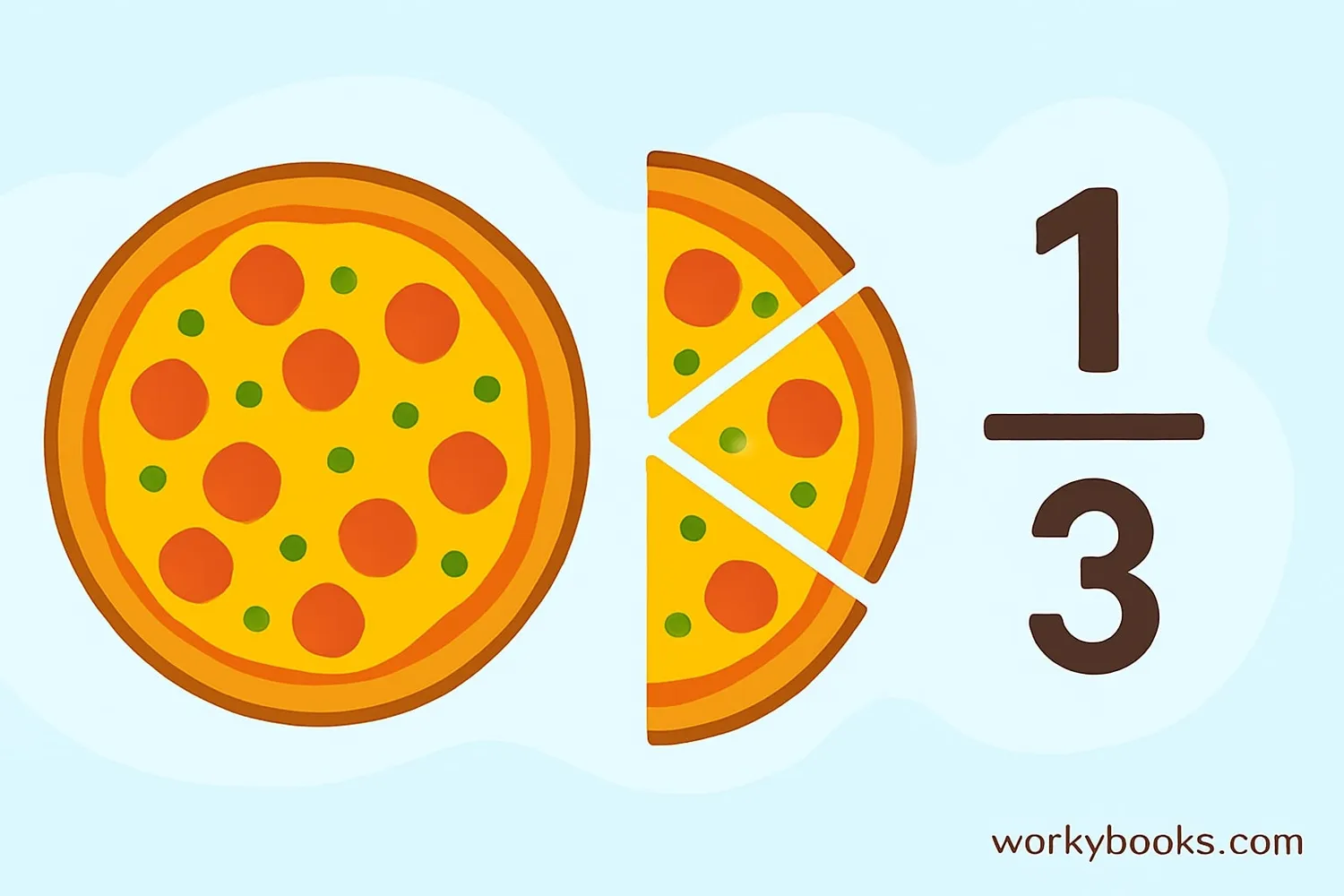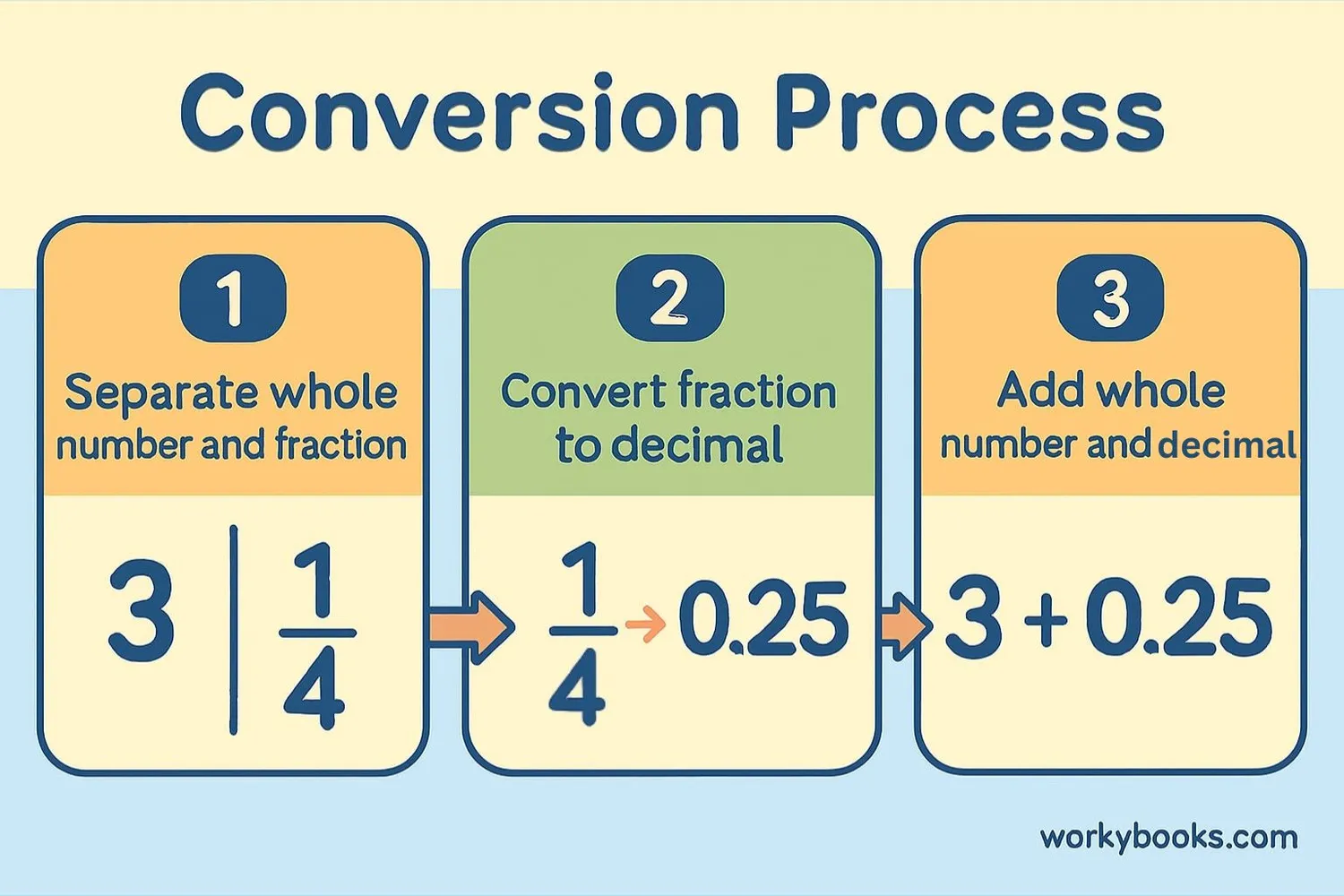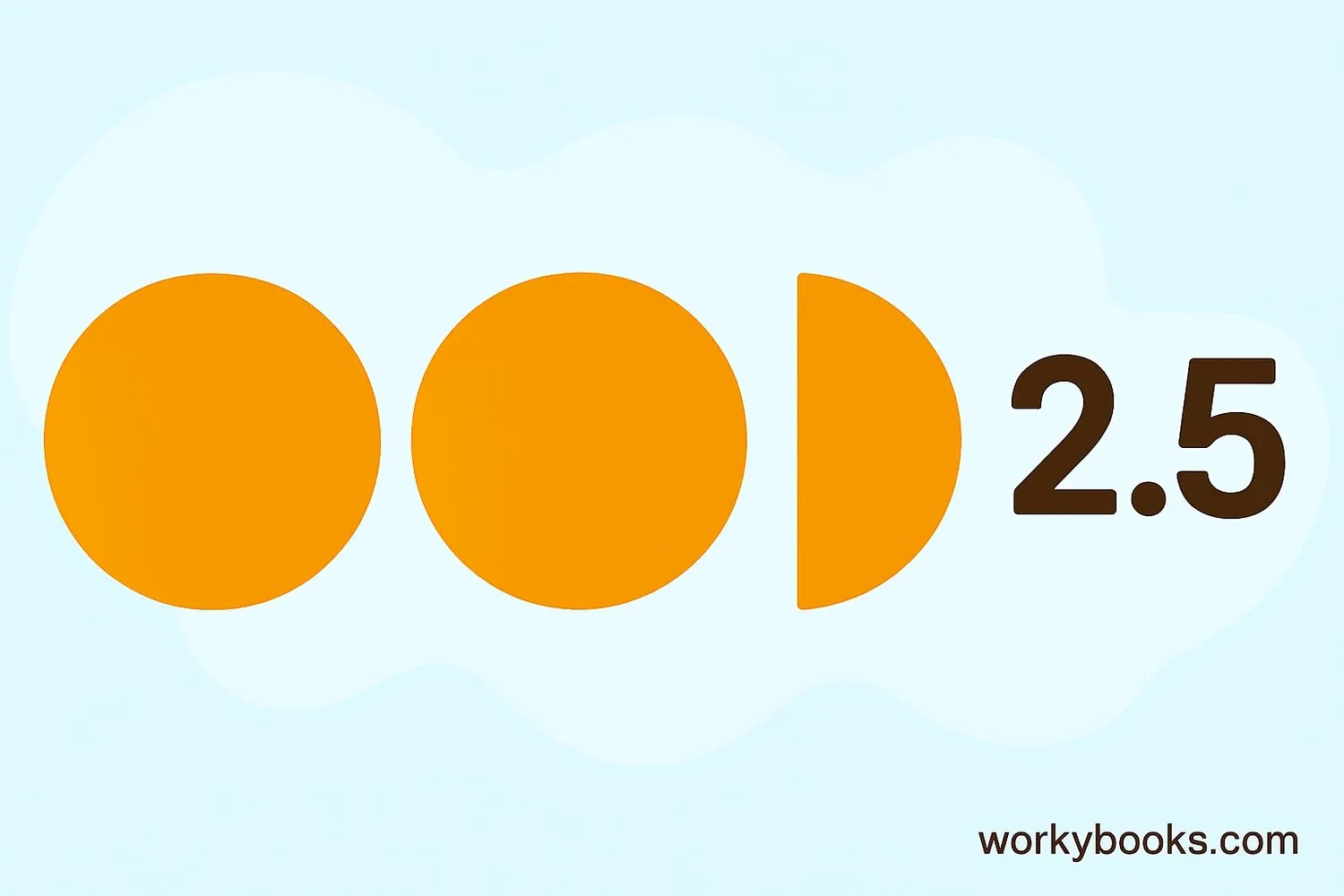Mixed Number to Decimal Conversion - Definition, Examples, Quiz, FAQ, Trivia
Learn to convert between mixed numbers and decimals with step-by-step explanations and practice activities
What is a Mixed Number?

A mixed number is a combination of a whole number and a proper fraction. It represents a value that is greater than one whole but not a whole number.
For example, if you have 1 whole pizza and 3/4 of another pizza, you have 1¾ pizzas. The number 1¾ is a mixed number.
Mixed numbers are useful in everyday life. We use them when measuring ingredients for recipes, measuring lengths, and describing quantities that aren't whole numbers.
Key Concept
A mixed number has two parts: a whole number part and a fractional part. The fractional part must be a proper fraction (less than 1).
How to Convert Mixed Numbers to Decimals

Converting mixed numbers to decimals is a straightforward process. Follow these steps:
Step 1: Separate the whole number and the fraction
Identify the whole number part and the fractional part of the mixed number.
Step 2: Convert the fraction to a decimal
Divide the numerator (top number) by the denominator (bottom number).
Step 3: Add the whole number to the decimal
Combine the whole number from Step 1 with the decimal from Step 2.
Conversion Formula
To convert any mixed number to a decimal, add the whole number to the result of dividing the numerator by the denominator.
Remember
When converting fractions to decimals, some divisions will result in repeating decimals. You can either round the decimal or use a bar notation to show the repeating pattern.
Conversion Examples

Let's practice conversion with some examples:
Example 1: Convert 2½ to a decimal
Answer: 2½ = 2.5
Example 2: Convert 3¾ to a decimal
Answer: 3¾ = 3.75
Example 3: Convert 4⅔ to a decimal
Answer: 4⅔ = 4.6 (The 6 repeats)
Common Mixed Number to Decimal Conversions
| Mixed Number | Decimal |
|---|---|
| 1¼ | 1.25 |
| 1½ | 1.5 |
| 1¾ | 1.75 |
| 2⅕ | 2.2 |
| 2⅗ | 2.6 |
| 3⅛ | 3.125 |
| 3⅜ | 3.375 |
| 4⅔ | 4.666... |
| 5⅚ | 5.8333... |
Practice Tip
Memorizing common fraction-to-decimal conversions (like ½ = 0.5, ¼ = 0.25, ¾ = 0.75) will help you convert mixed numbers more quickly.
Conversion Practice Quiz
Test your conversion skills with this 5-question quiz. Choose the correct answer for each question.
Frequently Asked Questions
Here are answers to common questions about mixed number to decimal conversion:
Math Trivia
Discover interesting facts about numbers and measurement systems:
Origin of Decimals
The decimal system was developed by Simon Stevin in the 16th century. He introduced the concept of decimal fractions, which made calculations much easier than using common fractions.
Decimal Point History
The decimal point was first used by John Napier in the early 17th century. Different countries use different notations - some use a point (.) while others use a comma (,) as the decimal separator.
Fractions in Ancient Times
Ancient Egyptians used unit fractions (fractions with 1 as the numerator) almost exclusively. They would express other fractions as sums of unit fractions. For example, ¾ would be written as ½ + ¼.
Repeating Decimals
The fraction 1/97 has a repeating decimal pattern that is 96 digits long! This is one of the longest repeating sequences for fractions with a two-digit denominator.





